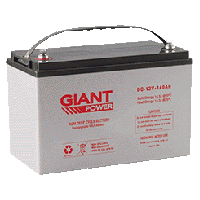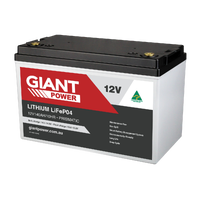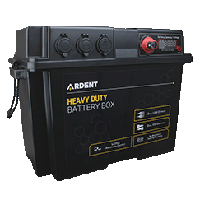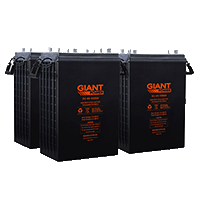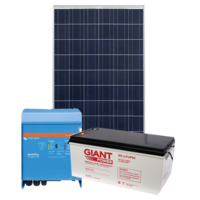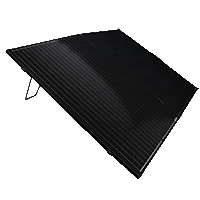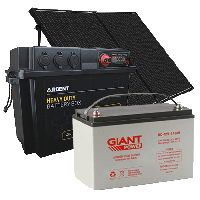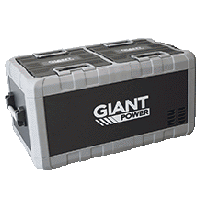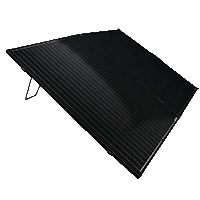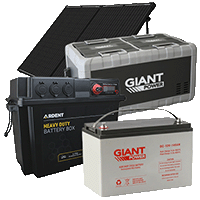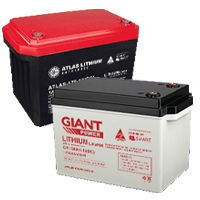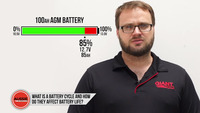Beginner's Guide to Solar Charge Controllers
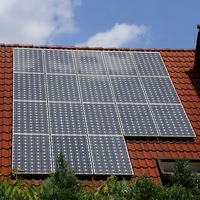
Solar charge controllers, also known as solar regulators, are an integral part of any stand alone solar system. The average 12 volt solar panel produces between 12 and 21 volts, a level that would overcharge and damage a battery if transferred directly to it. Solar charge controllers work by regulating this voltage to a level that can safely charge batteries and run appliances.
There are two main types of solar charge controller, the Pulse Width Modulation regulator and the Maximum Power Point Tracking regulator. Both do the same job of regulating voltage produced by solar panels, as shown in this solar charge controller schematic:
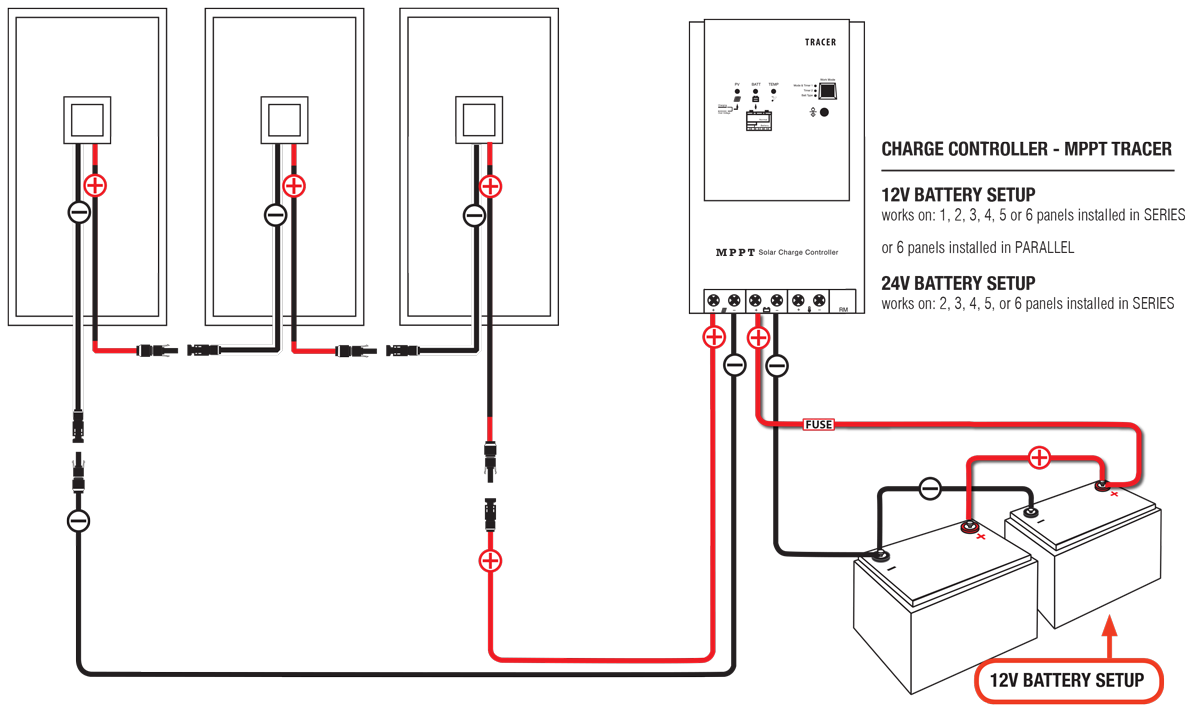
Pulse Width Modulation Solar Regulator
Pulse Width Modulation Solar Regulators are the most common type of battery charging technology. They’re able to prolong battery life and reduce heating and sulphation while charging. PWM charge controllers are usually cheaper than their Maximum Power Point Tracking counterparts but work at around a 70% efficiency rate when transferring energy from the panels to batteries.
Maximum Power Point Tracking Solar Regulator
A more recent technological advancement, Maximum Power Point Tracking regulators offer the same battery life-prolonging properties as PWM regulators but with a higher efficiency rate of 95 to 97%. They do this by transforming excess voltage to the right level with an increase in current, rather than by simply clipping it. While they may be the slightly more expensive option, the increase in efficiency offered by MPPT charge controllers makes them well worth the money, especially if you rely heavily on solar for your power needs.
How do I work out what size of regulator I need?
To find the correct minimum size for your solar regulator, you can use the following basic guide below, depending on whether you want to use a Pulse Width Modulation (PWM) or Maximum Power Point Tracking (MPPT) regulator. Please Note: this guide assumes you are using solar panels of the same type.
First, gather the following specifications from your solar panels and batteries:
1) Combined Wattage of solar system
eg. two 150W panels = 300W Combined Wattage of system
2) Nominal Voltage of solar system
Individual solar panels will usually have a nominal voltage of 12V or 24V. If you are connecting them in parallel they'll stay at the same nominal voltage, if they are connected in series the voltage will increase. (Not sure which? See our post on Series and Parallel)
eg. two 150W 12V panels in parallel = 12V nominal voltage of system
eg. two 150W 12V panels in series = 24V nominal voltage of system
3) Max Power Voltage of solar system
This is different to nominal voltage. Typically a 12V panel would have a max power voltage around 18V, while a 24V panel would be between 30V-36V. The same rules apply as above depending on whether your panels are in series or parallel.
eg. two 150W panels with 18V Max Power Voltage, in parallel = 18V Max Power Voltage of system
eg. two 150W panels with 18V Max Power Voltage, in series = 36V Max Power Voltage of system
4) Battery Charge Voltage
This is the voltage that your batteries will be charged at. Different battery types charge at different voltages, check your batteries for specifications if unsure.
eg. 1x 12V AGM Battery would be around 14.4V
eg. 2x 12V AGM Batteries in parallel would be around 14.4V
eg. 2x 12V AGM Batteries in series would be around 28.8V
Now that you've got these specifications, you can use them in one the two following calculations to work out what sort of regulator you need:
PWM Regulator Calculation
- Combined Wattage of solar system / Max Power Voltage of solar system = Maximum Current (A)
- Nominal Voltage of solar system (V)
eg. two 150W 12V panels in parallel, with one 12V AGM Battery
- Maximum Current = 300W / 18V = 16.7A
- Nominal Voltage = 12V
So using the above example for a PWM regulator, you will need one that can handle more than 16.7A maximum current, at a 12V nominal voltage.
Note: PWM controllers require nominal solar and battery voltage to be the same, eg. 12V nominal solar with 12V battery setup, 24V nominal solar with 24V battery setup
MPPT Regulator Calculation
- Combined Wattage of solar system / Battery Charge Voltage = Maximum Current (A)
- Max Power Voltage of solar system = Maximum Solar Input Voltage (V)
eg. two 150W 12V panels in parallel, with one 12V AGM Battery
- Maximum Current = 300W / 14.4V = 20.8A
- Maximum Solar Input Voltage = 18V
So using the above example for an MPPT regulator, you will need one that can handle more than 20.8A maximum current, and 18V Maximum Solar Input Voltage.
Note: If you are connecting a large number of panels in series (creating a high voltage), take special care to ensure that this is within the MPPT's maximum input voltage window. It is also recommended to use the Open Circuit Voltage (VOC) instead of Max Power Voltage in this scenario, to ensure the controller will not be overloaded in the instance of a short circuit.
Other things to look for when choosing a regulator include waterproof casing, LCD displays and ‘smart’ regulators with the ability to automatically detect the type of battery they’re connected to. Whichever option you go for, remember to install your regulator outside of direct sunlight and with an appropriately rated fuse between it and the solar panel. You can find out more about what to look for in the panels themselves by looking at our blog post on portable solar power.
Check out our range of solar panel regulators or give one of the Aussie Batteries & Solar experts a call on 1800 853 315 if you need some help sizing up a solar charge controller for your system.
May 7, 2014 | By Aussie Batteries | Comments

